Please don’t take this as an endorsement of energy drinks, especially not for adolescents; they don’t need the extra sugar, caffeine, and who-knows-what. However, it does take a little knowledge of how generators and motors work to get the joke in this ad. I think I’ll ask my middle schoolers to explain what’s going on as a short quiz after we talk about electricity and magnetism.
Tag: magnetism
Coronal Rain: Learning Physics with the Sun
NASA’s Heliophysics (physics of the sun) website has an excellent collection of videos that would link quite nicely with physics discussions of the physics of light (electromagnetism) and the Earth’s magnetic field (as well as the action of charged particles in a magnetic field.
They also have awesome solar videos, like this one of coronal rain.
Natural phenomena like this are great for students to analyze because they require the integration of multiple concepts to explain.
Magnetism
Notes:
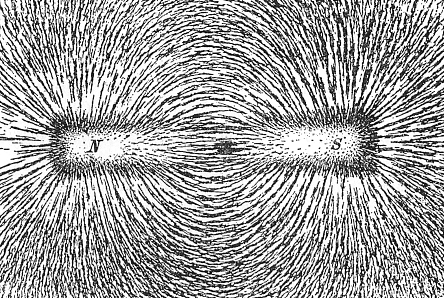
What creates magnetic fields? (36.3)
Magnetic fields are created by moving electric charges. At the atomic level:
- In atoms, most of the magnetic field comes from the spinning of electrons (remember electrons have a negative charge).
- In most elements, the magnetic fields of electrons pair up and cancel each other out
- Only certain elements, which have a few electrons that don’t pair up, can form magnets:
- Iron (Fe), Nickel (Ni) and Cobalt (Co) are the common magnetic elements.
- Iron is the most powerful magnetic element. It has 4 electrons whose magnetism are not canceled out (because of their arrangement in their electron shells)
- Some rare earth elements are also naturally magnetic.
Magnetic Domains (36.4)
Each iron atom has a very small magnetic field, but when a bunch of them line up they add to each other to create a stronger field.
A region with a bunch of lined up atoms is called a magnetic domain.
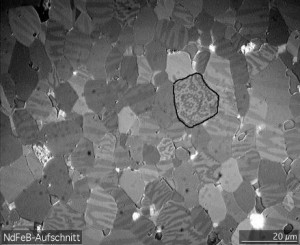
If all the magnetic domains line up you have a strong magnet. If they’re all randomly arranged, you don’t have a magnet at all; they cancel each other out and it’s unmagnetized).

Magnetic Poles (36.1)
Magnets have two poles: a north-seeking pole, and a south seeking pole; they align with the Earth’s magnetic field.
Like poles repel and opposite poles attract.
The force between the poles depends on the strength of the poles (p) and the distance (d) between them:
Note how similar this equation is to the force between two charges (Coloumb’s Law; Fc), and the force between two masses (gravitational force; Fg).
Electric fields come from charged particles, which can be separated, but north and south magnetic poles belong to each domain (and even each atom) so they cannot be separated.
- If you break a bar magnet in half you don’t get a separate north and south poles, you just get two magnets, each with it’s own north and south pole.
Magnetic Fields (36.2)
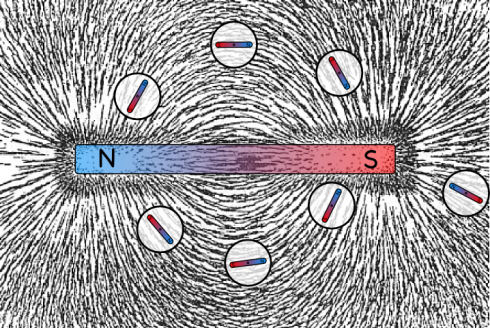
The region around the magnet that is affected by the magnetic force is filled with a magnetic field. In theory the magnetic force goes on forever, but is only strong in a relatively small region.
Compasses, which have magnets that are free to move, will align themselves with the magnetic fields around them. When you’re away from other magnets and electronic devices, compasses align with the Earth’s magnetic field.
So how do you create a magnet?
In an unmagnetized piece of iron, the magnetic domains are arranged randomly. If you place it in a strong magnetic field, the domains will align with the strong magnetic field and the iron will become magnetic.
- Softer iron alloys will align easier, and stay aligned to make strong, permanent magnets.
- Any metal with iron in it (like steel cans or filing cabinets) will gradually align their magnetic domains with the Earth’s magnetic field if they not moved for a long time, but the Earth’s field is not strong enough to make a permanent magnet.
- Stroking a piece of iron with a magnet will also align the domains.
- Touching a magnet to a paperclip or iron nail will align its magnetic domains and create a temporary magnet, which is why you can use a magnet to hold up a chain of nails. This induced magnetism will only last a short time and eventually (within seconds or minutes) of removing the magnet, the nails will lose their magnetism.
- Dropping or heating a permanent magnet will shift some of the domains out of alignment, reducing the strength of the magnet.
The Magnetic Fields of the Planets
The Earth’s magnetic field results from the movement of molten metal in the Earth’s core. The outer core actually. It’s mostly molten iron, which conducts electricity, and as it convects up and down, like boiling water in a pot, the moving electrical charges create the Earth’s magnetic field. Its a bit like a dynamo.
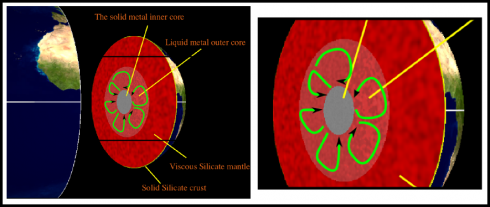
What drives the convection of the outer core? The heat released from the freezing of the liquid metal to the solid inner core. The inner core is ever expanding, and the outer core is getting smaller and smaller. Ultimately, when the entire outer core freezes the Earth’s magnetic field should disappear. But we’ve got some hundreds of millions of years left so we don’t have to worry quite yet.
The Other Planets
The question came up: Do Mars and the other planets have magnetic fields?
Astronomynotes has compiled a table of Planet Atmospheres and Magnetic Fields that shows that of the inner planets — Mercury, Venus, Earth and Mars — only the Earth has a significant magnetic field; Mercury does have its own field but it has less than 1% the strength of the Earth’s.
At present, Mars does not have a magnetic field, but it does have remnant magnetism imprinted on its rocks, indicating that it used to have one in the past. It’s internal dynamo died away long ago. Interestingly, the pattern of Mars’ remnant magnetism indicates that it’s interior was once molten enough that the surface had tectonic plates just like the Earth.
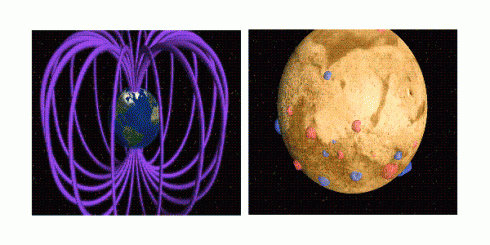
On the other hand, the outer planets have much larger magnetic fields; Jupiter’s is almost 20 times larger than Earth’s. The gas giants’ magnetic fields are also generated by fluid motion in their interiors (Stevenson, 1983 (pdf)). It’s likely, however, that in some of these bigger planets, at least, the electrically conductive fluid is not liquid metal like in the Earth’s core, but either liquid hydrogen, or a water solution with dissolved electrolytes.
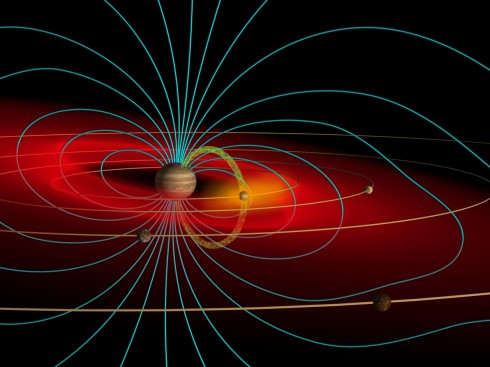
Building a Simple Electric Motor
This is a really simple electric motor that only requires some wire, a battery, and a magnet. Simon Quellen Field has a wonderfully detailed description of how to build the motor, and some elegant tips on how you can make the motor run faster.
My middle-schoolers quite enjoyed building one of these, and I’m planning on having my high-school physics students also try it; only a couple of them claim to have done it before. It should be a good way to tie together electricity and magnetism.
(Evil Mad Scientist has an even simpler motor, but, given that the risk that their homopolar motor is quite capable of launching a drywall nail across the room, I think I’d suggest not trying that one without extremely close supervision.)
Although it’s a bit trickier, another great way of demonstrating electromagnetic induction is to build a simple alternating current generator that runs a small light bulb.
Bill Beaty’s website explains how to build the generator in excellent detail.
The best part of building the generator is that you can actually feel the extra energy it takes to light the bulb, as you spin the magnets.
Bug Power Generator
Most power plants create electricity by spinning a magnet while it’s inside a coil of wire. That how coal power plants do it, it’s how hydroelectric power plants do it, it’s how wind plants do it, it’s even how nuclear power plants do it; solar power panels don’t do it this way, however. The coal and nuclear plants, for example, boil water to create steam which spins the turbine that rotates the magnet.
In theory, you can use any type of power source to spin the turbine, including people power. On bicycles, you can use them to power your lights. But because you’re now using some of your mechanical energy to create electricity, it will slow you down a bit. Newer, hub dynamos, however, are apparently quite efficient.
So, in theory, you could use any type of animal to generate electricity. Including, for example, using bugs to charge your iPod.
I love how he holds up the voltmeter 34 seconds into the video to prove that his device works.
Voyager Explores the Electromagnetic Field at the Edge of the Solar System
This video from NASA (via physorg.com) includes a nice little section showing the movement of charged particles (cosmic rays) through the Sun’s magnetic field. What’s really neat, is that the Voyager spacecraft (now 33 years old) have discovered magnetic bubbles at the edge of the solar system that make the particles dance a little. It’s a wonderful application of the basic principles of electricity and magnetism.